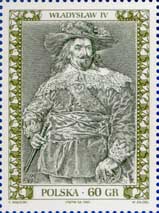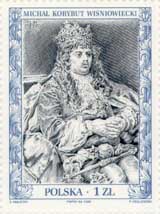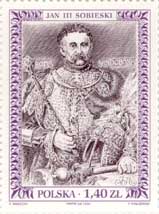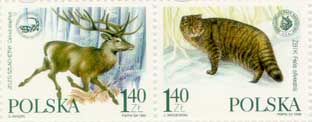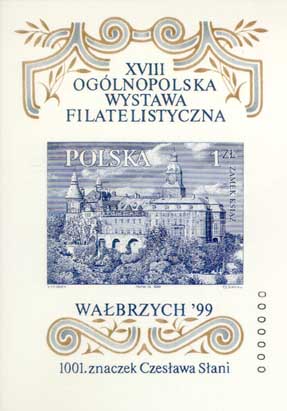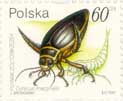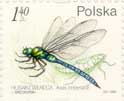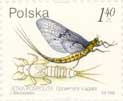The 18th National Polish Philatelic Exhibition will take place in the castle in Ksi±ż, located near Wałbrzych. The Polish Post will introduce a stamp in the form of a block into the market, representing the famous castle.
The third biggest castle and one of the biggest such castles in Europe (its cubature is ca. 150,000 m3), used to be "a pearl of Silesia" due to its picturesque location and rich interior decorations. Its shape, formed during several centuries, constitutes a conglomerate of architectonic styles. It includes Renaissance and Baroque elements added as a result of reconstruction works to the initial 13th century stronghold.
The castle was erected by Prince Bolek I from the line of Piasts from ¦widnice-Jaworz, who made it the main seat of his family. It used to be called the Prince's Mountain (Furstenberg) at that time. Its name was changed into the Prince's Stone (Furstenstein) at the end of the Piasts reigns, after almost 100 years.
After the termination of the line of ¦widnica Piasts (1392), the ¦widnicko-Jaworskie Principality became the property of the Czech kings on the basis of the succession and hereditary agreement. Ksi±ż was transferred to subsequent stewards as pawned estates since that moment till the beginning of the 17th century.
In 1497, Władysław Jagiellończyk, gave away the castle in Ksi±ż to a Czech magnate, while he sold the castle to Konrad Hochberg in 1509. Since that time, it remained property of the old family till the years of the Second World War.
The castle had several reconstructions broken by damages resulting during the 30-year-long war and Silesian wars when it belonged to the Hochbergs. The old Gothic stronghold was reconstructed as a Renaissance residence in the 16th century. The reconstruction works conducted in the 18th century had the widest range. F. Hammerschmidt, architect from ¦widnica, shaped the magnate residence as a Baroque residence surrounded with gardens and a spacious English park. Maximilian's Hall, adorned with stucco works of Ramelli and paintings of the famous Silesian painter, Feliks Anton Scheffler, can be distinguished among the new representation halls. The castle gardens were adorned with rococo balustrades and sculptures made by J.G. Schenck.
The last reconstruction works were conducted in the years 1909-1922, introducing eclectic elements into the mosaics of architectonic styles. There were created two Neo-Renaissance wings: western and northern.
The multiple transformations of the castle was based on the huge wealth of its owners. The Hochbergs were one of the richest families in the Reich at the beginning of our century. The lords of Ksi±ż and Pszczyna Princes had almost all the mines in the Wałbrzych Region, glass works, manufactures, and then also factories.
The Hochbergs lost Ksi±ż in 1939. The last Prince, Jan Henryk XVII, emigrated to England. His properties were confiscated, and the castle, due to its topographic and geographic location, was selected to be the headquarters of Hitler. Works on its adaptation were undertaken in 1941. Prisoners from a branch of the concentration camp of Gross-Rosen were engaged in the reconstruction. The design included a performance of a system of underground passages and corridors made in the rocks under the castle. But the plan was not fully realised. The works were stopped in 1945.
The castle, reconstructed in the 1960s, possessing over 400 rooms, was made available to tourists. At present, it is the seat of numerous exhibitions, conferences, and fairs.
First day envelopes will be sold in the Post Office Wałbrzych I on the day of the introduction of the stamps into the market. |
